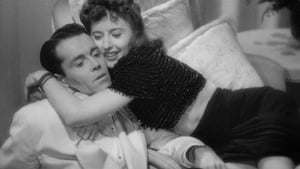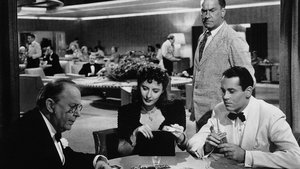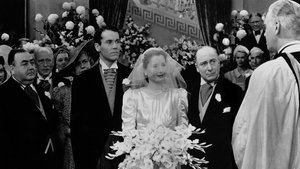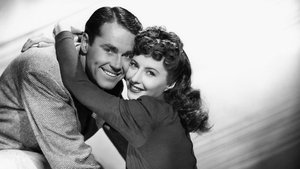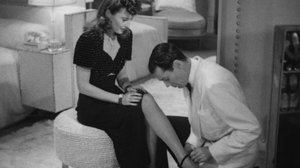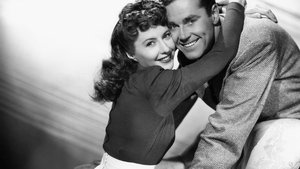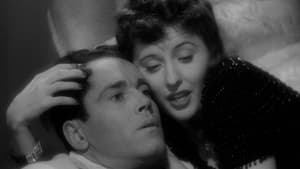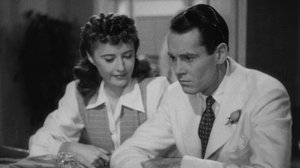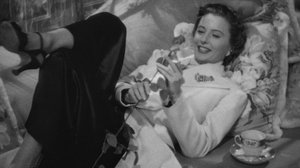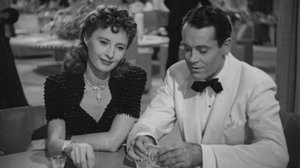Video Sources 0 Views
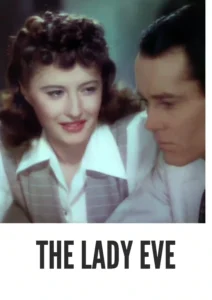
Synopsis
Seduction and Deception: The Lady Eve (1941) in Stunning Color

Dive into the sparkling world of The Lady Eve, a dazzling romantic comedy from 1941, now beautifully colorized for a viewing experience like never before. Starring Barbara Stanwyck and Henry Fonda, this film, directed by Preston Sturges, delivers a delightful blend of wit, charm, and playful deception. Perfect for classic film buffs and those seeking a dose of golden-age Hollywood glamour, this HD download brings a timeless cinematic gem to your screen. Also known as Two Bad Hats.
The Lady Eve Storyline: A Game of Hearts and High Society
The Lady Eve follows the story of Jean Harrington (Barbara Stanwyck), a sophisticated con artist who sets her sights on the wealthy and naive Charles Pike (Henry Fonda). Jean, along with her father, Colonel Harrington, works aboard an ocean liner, fleecing wealthy gentlemen. When Charles, an ale enthusiast and heir to the Pike Brewery fortune, boards the ship, Jean sees him as her next mark.However, as Jean and Charles spend time together, a genuine connection forms between them. Despite her initial intentions, Jean finds herself falling in love with Charles. Their romance blossoms, but Charles’s family and associates soon reveal Jean’s true identity, leading to a painful breakup. Determined to win back Charles’s affections, Jean returns as the “Lady Eve Sidwich,” a glamorous English noblewoman, and turns the tables on him. A hilarious game of seduction and revenge ensues as Jean seeks to prove that love can conquer all, even the most elaborate deceptions. The Lady Eve is a masterclass in comedic timing and witty dialogue, making it a beloved classic.
Movie Cast
The film features a stellar cast of actors who bring this romantic comedy to life:
- Barbara Stanwyck as Jean Harrington / Lady Eve Sidwich
- Henry Fonda as Charles Pike
- Charles Coburn as Colonel Harrington
- Eugene Pallette as Mr. Pike
- William Demarest as Muggsy
Movie Genre
The Lady Eve falls into the genre of screwball comedy, with elements of romance and satire. Its witty dialogue, fast-paced action, and comedic situations make it a quintessential example of the genre.
Historical Context: The Golden Age of Hollywood
Released in 1941, The Lady Eve represents the height of Hollywood’s Golden Age, showcasing the industry’s ability to produce sophisticated and entertaining films that captivated audiences worldwide. The film was directed by Preston Sturges, a writer-director known for his witty scripts and sharp social commentary. The Lady Eve is a prime example of Sturges’s unique style, blending humor and romance with a touch of cynicism.
Colorization Details
This colorized version of The Lady Eve has been meticulously restored using modern digital techniques, enhancing the visual appeal while preserving the film’s original charm and sophistication. The colorization process involved carefully analyzing the grayscale tones of the original black and white footage and assigning appropriate colors to each scene. While the specific software used remains proprietary, the techniques employed included advanced algorithms for color palette selection and image enhancement. This painstaking process brings new life to the characters and settings, making the story even more engaging for modern audiences. While opinions on colorizing classic films may vary, it introduces these films to a broader audience, ensuring their legacy for future generations.
Technical Details
- Director: Preston Sturges
- Screenplay: Preston Sturges
- Cinematography: Victor Milner
- Edited by: Stuart Gilmore
- Production Company: Paramount Pictures
- Distributed by: Paramount Pictures
- Runtime: 94 minutes
Technical Specifications
- Download Format: MP4
- Resolution: HD (1080p)
- Compatibility: Compatible with most devices, including smartphones, tablets, computers, and smart TVs.
Reviews and Critical Reception
The Lady Eve is widely regarded as one of the greatest comedies ever made, celebrated for its witty dialogue, sharp performances, and clever plot twists. The film has been praised by critics and audiences alike for its sophisticated humor and timeless appeal. As a standout example of Hollywood’s Golden Age, The Lady Eve continues to delight viewers with its charm and wit.
FAQs
- Q: What is The Lady Eve about?
- A: The Lady Eve is a romantic comedy about a con artist who falls in love with her mark and then seeks revenge when he discovers her true identity.
- Q: Is The Lady Eve (1941) a well-known classic film?
- A: Yes, The Lady Eve is a highly regarded classic film, known for its wit, charm, and stellar performances.
- Q: Is this version of The Lady Eve colorized?
- A: Yes, this version has been professionally colorized to enhance the viewing experience.
- Q: What makes The Lady Eve so special?
- A: The Lady Eve is celebrated for its witty dialogue, sharp performances, and clever plot twists, making it a timeless classic.
- Q: What is the download format?
- A: The download format is MP4, which is compatible with most devices.
- Q: What resolution is the download?
- A: The resolution is HD (1080p), providing a high-quality viewing experience.
Download Now in HD!
Watch The Lady Eve Today!
